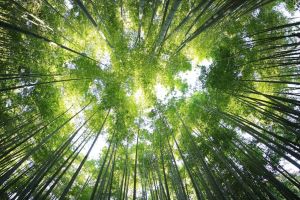
An organism lives in an area known as a habitat. All terrestrial and aquatic life, is part of an environment on earth that supports life, known as a habitat.
All living organisms in an environment are shaped by their ecosystems which contain biotic and abiotic factors around them.
Abiotic factors are the non-living physical environment. Examples include sunlight, water, temperature, atmosphere.
Biotic factors are the living organisms that exist and vary in different environments.
All living organisms in a habitat are subject to the resources available, the non living environment, as well as the interaction between other species.
The role of a species in an ecosystem is determined by ecologists to understand how ecological relationships change and differ over time in different geographical locations.
Habitat creation or restoration occurs when a new ecosystem is discovered.
Table of Contents
An organisms way of life
An organism’s way of life is determined and shaped by its environment. The term biosphere refers to all areas of earth where life exists.

This is where the cycling of nutrients and the flow of energy between abiotic environments and biotic communities are explored.
The genetic matter contained in living organisms as well as natural selection is important to biomes and organisms as they may vary and alter the way an organism functions and evolves in response to different environmental stressors.
Life forms vary in different environments. This is due to different organisms containing behavioral and physical attributes that allow them to live as their immediate conditions around them change.
Many species of lizards use the temperature or sunlight exposure to regulate their body temperatures. Whereas some animals use the energy provided from digesting their food to maintain body temperature.
Other smaller organisms such as hummingbirds have developed a mechanism to lower their overall body heat to match environmental conditions and not lose their heat at night when not feeding.
The area where an organism lives
The area where an organism lives provides information on the difference between environment and habitat. A habitat is the meeting of environmental conditions needed to survive and live in nature.

The environmental factors include all the living and non-living factors in a given area that influence life.
For example, biotic components consist of animals, plants, forests, aquatic life and birds and abiotic components consist of water, land, sunlight, rocks, and air.
The factors that act to limit the growth of populations are collectively called environmental resistance. The carrying capacity of an environment defines how many organisms a habitat can support.
Besides population capacity, changes in one part of an ecosystem affect all its populations if there is an imbalance between the amount of energy within a food web available.
The specific type of environment in which an organism lives

The specific type of environment in which an organism lives provides organisms with food, shelter, water and space. Different habitats and climates are shared amongst many forms of life creating global biomes.
Examples of environments on Earth in which life is found vary according to the geographical location which influences the temperature, the landscape and rainfall ultimately affecting the growth of the different plant and animal life of a region.
What an organism gets from its environment determines whether it will produce offspring or not and utilize the materials needed to survive.
Some examples of habitats include:
Polar: Icey and snowy with few plants. Animals such as polar bears, penguins and seals have adapted to survive the harsh weather conditions.
Tundra: Is mostly cold and bleak with moss, shrubs and dorses growing. Foxes, owls, polar bears and hares may be found here and have much lighter fur complexions to camouflage in and amongst the terrain.
Deserts: Some deserts are cold and dry and others warm and dry. Many organisms create underground burrows to survive the cool and warm temperatures. Camels, snakes lizards and plant life have learned to adapt to retain water.
Grasslands/Wetlands: Large wide open spaces mostly consisting of grasses and low rainfall. Larger animals such as elephants, rhinos, lions and buffalo graze the lands whilst smaller animals seek shelter underground for protection against predators.
Forests: Consist of many tall trees with organisms living in and amongst the layers of trees, on the ground and underground. Most forests are warm and wet depending on rainfall and they have many unique species.
The main three types of forests include:
- Coniferous
- Temperate
- Tropical
Water: Includes both freshwater and saltwater areas such as ponds, swamps, lakes, rivers and the ocean. Each contains different types of plant and animal life owing to the nature of still or flowing/moving water.
Which of the following is not a part of an organisms habitat?
A geographical location is not a part of an organism’s habitat. Many microorganisms may live on other forms of matter including rocks, a rotting log, moss, or on or inside another larger organism that acts as a host.
The different types of habitats are categorized according to the environmental characteristics of a location, the climate as well as vegetation. Habitat types, biomes, do not necessarily involve a single species but rather involve many different species occupying the same area.
Organism Pictures

Organism pictures are an important tool used to identify wildlife. It is important to correctly identify wildlife because it allows ecologists to better understand the environment.
It also helps ecologists organize and categorize different aspects of ecosystems.